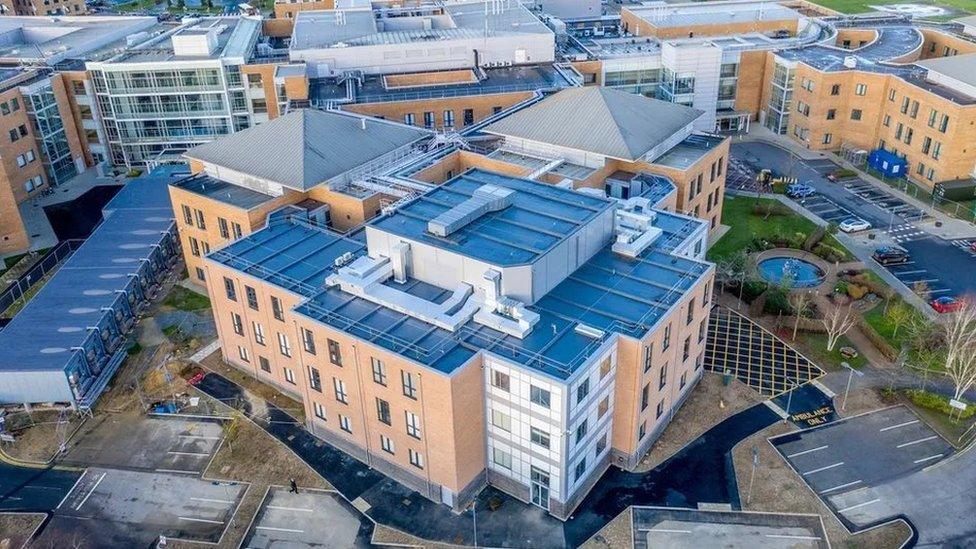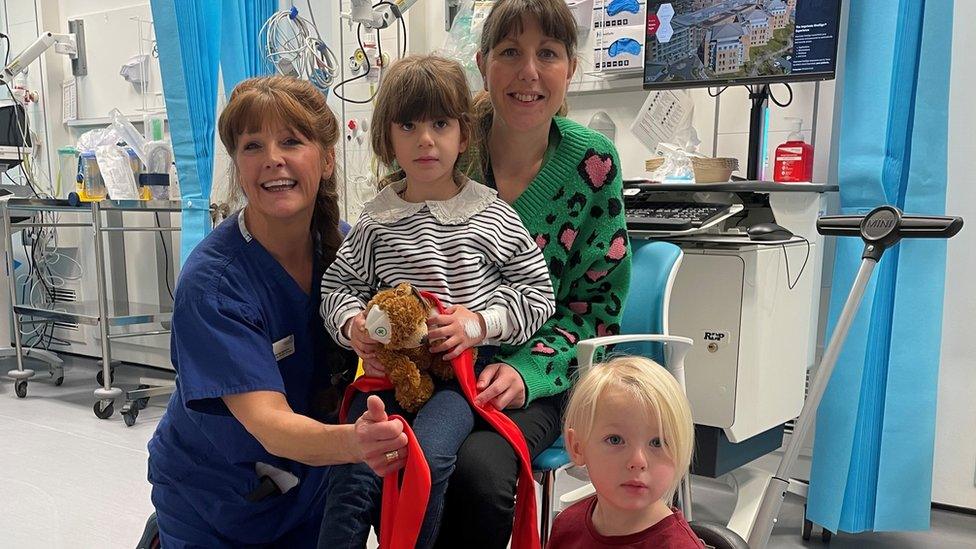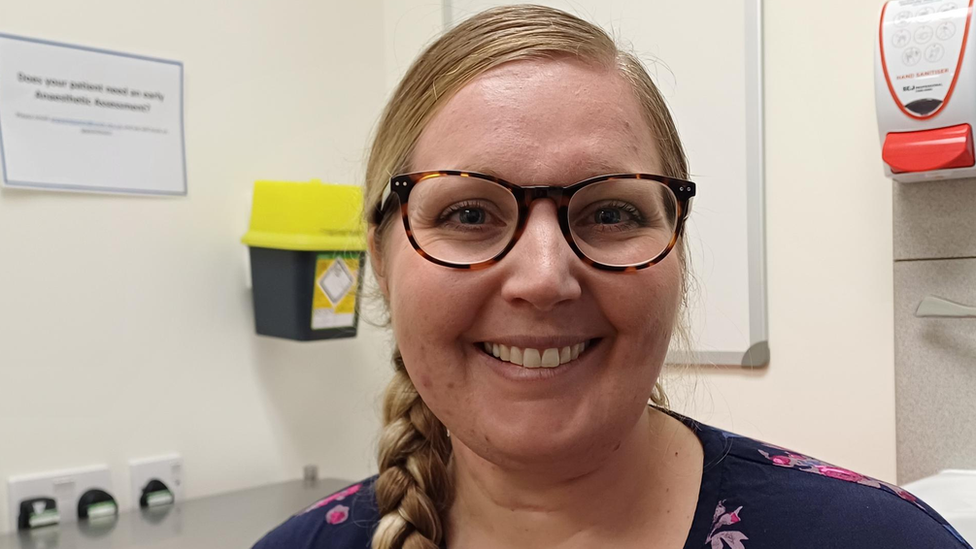Patients treated in corridors as Norfolk hospital struggles with demands
- Published
- comments

A staff email described how wards at the Norfolk and Norwich Hospital are "highly congested"
Internal documents seen by the BBC have described hospital patients in corridors, crowded wards and "high congestion" as it struggled to meet demand.
Norfolk and Norwich Hospital chair Tom Spink acknowledged the pressures it currently faced in a message to staff.
He said their level of effort "can't be sustained forever" but there was "no alternative".
The trust said it was dealing with "extreme circumstances".
Writing on the trust intranet Mr Spink said: "We all have a part to play and must work together to ensure that seven in a six and patients in corridors ends as quickly as possible".
"Seven in a six" was a reference to extra beds in wards and bays intended for six people.
He also linked the hospital's progress in reducing ambulance handover delays with capacity problems related to patient flow and discharge.
'Speed up discharges'
In an email to staff, chief operating officer Chris Cobb said the hospital had experienced "very high demand" and "inpatient wards are in a very congested position".
He said it was recognised that steps needed to be taken quickly to "improve patient safety and patient/staff experience".
He wrote: "Over the coming days we will need to work with system partners to reduce admissions whilst doing everything we can do speed up and facilitate extra discharges within the hospital."
He added: "Over the next week, we would ask everyone in the hospital, clinical or non-clinical, to work together in a concerted way to address the situation. That may mean cancelling meetings, postponing routine outpatient appointments and prioritising inpatient care.
"For example, our therapy services and radiology services are using their capacity to support the wards. Extra clinicians are working in the emergency care areas to help us avoid admissions and to facilitate discharge. Many non-clinical staff are helping with ward mealtimes."
'Safety risk'
One member of staff, who the BBC is not naming, said patients were treated in corridors and the overall situation was "compromising patient safety due to being understaffed and overworked, and is a fire safety risk as well".
Nick Hulme, Norfolk and Norwich University Hospital interim chief executive, said: "The NHS across Norfolk and Waveney is extremely busy and placing extra beds on our in-patient wards and assessment units is something we only do in extreme circumstances to reduce pressure on the ambulance service and emergency department.
"We know that the patients most at risk are those waiting emergency assessment and initial treatment, which is why we have taken a zero-tolerance approach to ambulance delays outside our emergency department to release ambulance crews back into the community to attend 999 calls.
He said it was difficult for "when we have beds in areas outside our usual practice," but it was working on getting "a higher proportion of patients home before noon when they are ready for discharge".

Follow East of England news on Facebook, external, Instagram, external and X, external. Got a story? Email eastofenglandnews@bbc.co.uk , externalor WhatsApp 0800 169 1830
- Published10 January 2024

- Published8 January 2024
